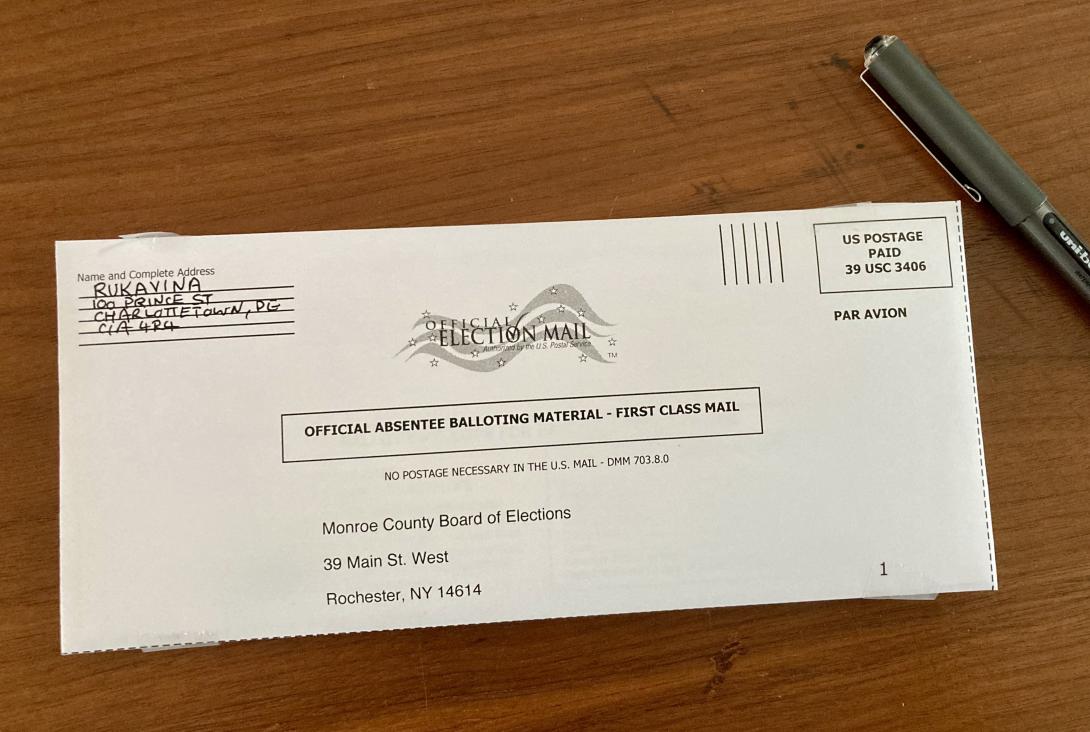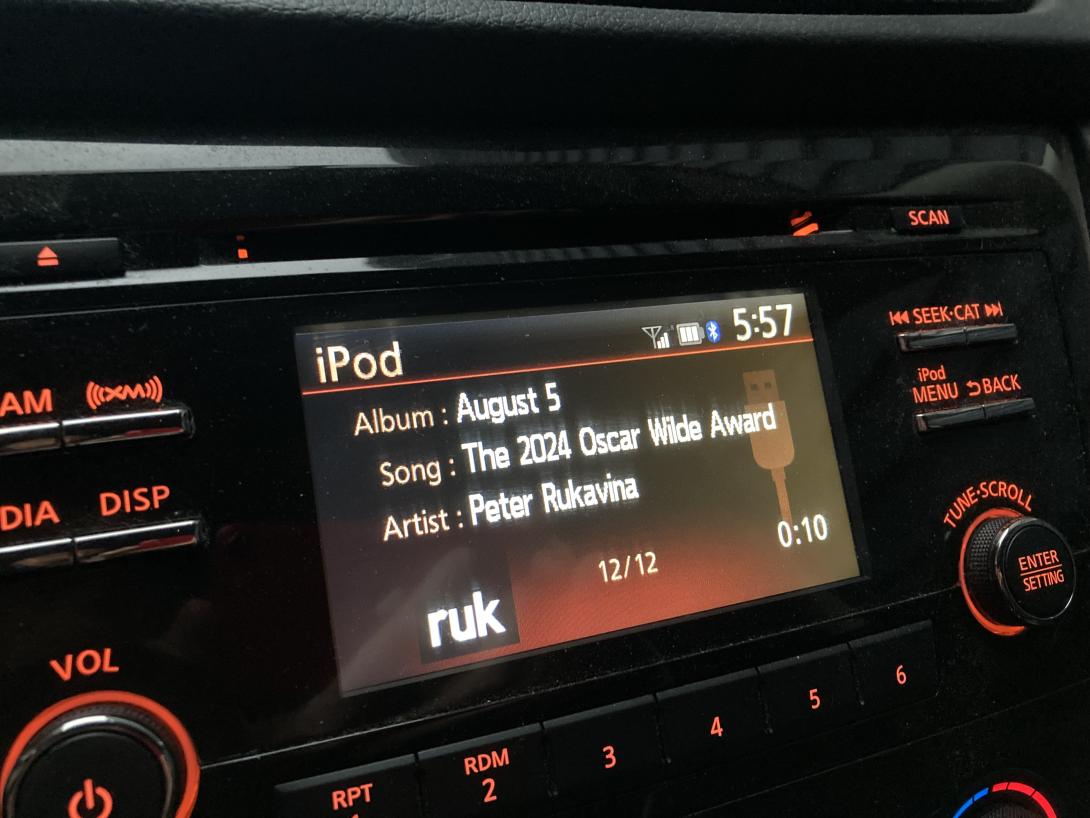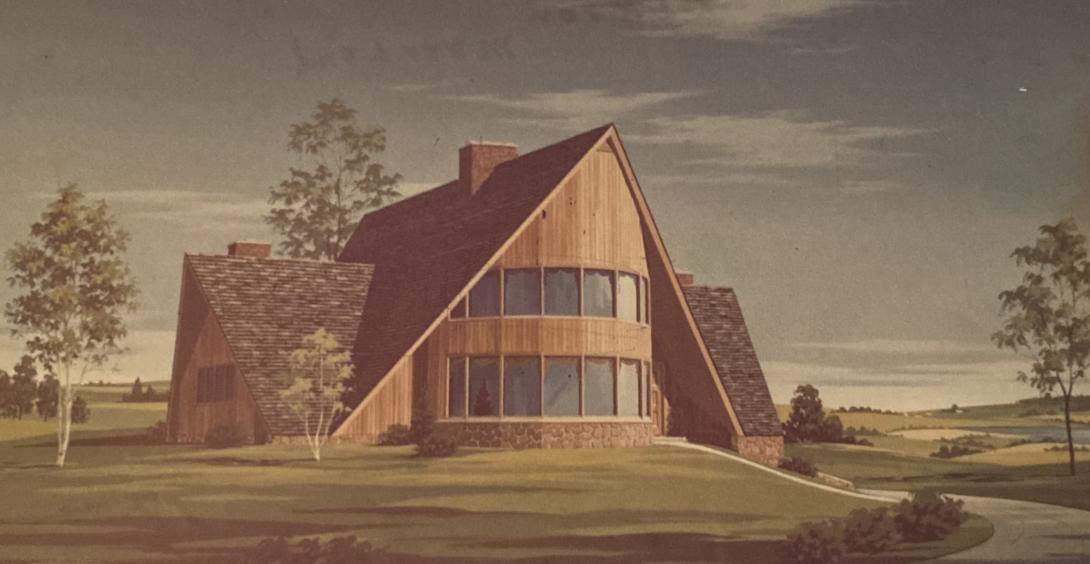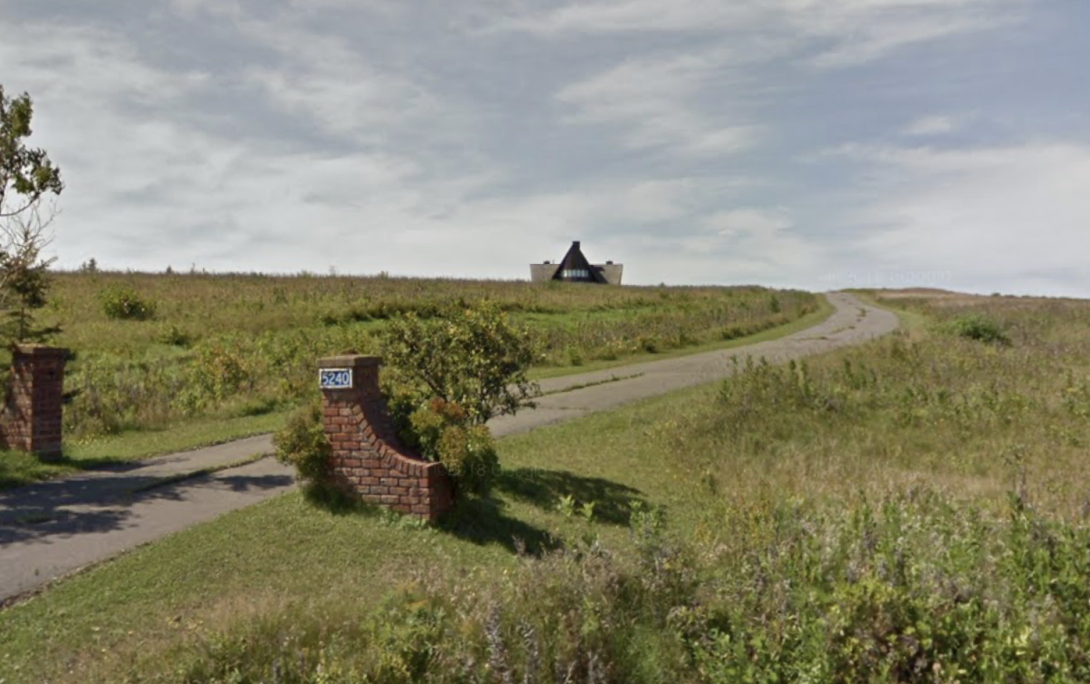I voted absentee in the U.S. federal and state elections back in September, casting my vote for Kamala Harris.

Given the quirks of U.S. election regulations, I vote at the address where I lived with my parents, as a newborn, in 1966: 863 Post Avenue, Rochester, NY, I house we left 3 months after I was born.
I’ve been a digital hobbyist for almost 50 years, from my days fooling around with a TRS-80 Model One (on which I coded a video game, in BASIC, called “Galactic Warrior,” and then parlayed my skills into my first coding job) through to my experiments with everything from energy data to ship positions.
Along the way, I’ve accumulated a collection of websites that serve various roles. As I age, as these websites age, and as I recentre my life on analog over digital, their maintenance becomes less a “things I do while procrastinating” and more “annoying obligation.”
So I’m in the midst of a downsizing project, seeking to strip out what’s not needed, find a new home for things that are best housed elsewhere, and to preserve things that deserve preserving.
Here’s what I’ve achieved so far (I’ll update this list as I make progress).
Migrated
- WhatsMyLot.com, a single-page website that lets you find out what lot you’re in on Prince Edward Island, from you phone’s location, got migrated to a new server, and will live on. I created it in 2014 as an unofficial side project to the Samuel Holland map repatriation festivities.
- CaminoFrances.info, a single-page companion website to Bryson Guptill’s book about walking the Camino, is similarly on a new server, and will live on.
- TheIslandWalk.info, a similar single-page site showing the route of The Island Walk, has a new server too. I’ve been updating it regularly, with Bryson’s help, and the underlying data is available on Github.
- I migrated the Crafting {:} a Life website, which supported our 2019 unconference of the same name, from a Drupal site to a static HTML site, for posterity.
- CatherineHennessey.com is, I expect, one of the oldest handcrafted PHP sites you’ll come across. Catherine wrote a blog there from 2000 to 2003. It has a new server too.
- QueenSquarePress.ca and Reinvented.net, my “corporate” websites, didn’t really need dedicated sites of their own, so they now simply redirect to pages here.
- My personal wiki.ruk.ca site, which I created after I came home from Reboot for the first time in 2005, was running a very old “you can’t really upgrade easily” version of the same MediaWiki software that runs Wikipedia. As I stopped updating it a long time ago, I simply wrapped an HTML wrapper around the Internet Archive’s latest snapshot.
- HaroldStephens.net was a Drupal 5 site (!) long past its natural lifespan that I created many years ago for my late friend the adventurer and author Harold Stephens. The DNS still points my way, but I don’t control it any longer. The site will retire when my legacy server retires; after that, the Internet Archive Snapshot will preserve it.
- opencorporations.org and it’s redirected companion closedcorporations.org, held snapshot of PEI corporate registrations from 2008. I’ve shut down the public search site, but exported the raw data should others find it useful for historical purposes.
In Progress
- A collection of energy-related tools and archives — consuming.ca, pei.consuming.ca, energy.reinvented.net — remain in place. They remain valuable tools, and I would, ideally, find new homes for them, where they can be maintained permanently.
- Sites for a couple of pro bono clients — PEILegion.com, RoyJohnstone.com — maintained still in Drupal 7, need new homes and/or migrations to Drupal 10.
I expect I’m not alone, being among the first generation of Internet citizens, now in our 50s and 60s, looking at digital things through this lens.
When I migrated my blog to Drupal 10 back in September, one of the things that got left out was migrating the collection of just over 300 sounds that I’d posted over the years.
I sat out to do this today, and they’re back in place here, everything from me at 6 months old to a remixed Stuart McLean to versions of The Island Hymn to a Bruce Guthro bootleg.
I’ve also brought the podcast feed of sounds back to life.

This was a ChatGPT-assisted coding job, with the prompt:
I have a legacy Drupal 7 website. I have migrated it to Drupal 10 using the “migrate” modules. One of the content types, “sound”, migrated the title and body fields, but not an attached Media field, which points to a managed file, and MP3, that is the sound attached to each node.
I want to reattach the MP3 files to the nodes in Drupal 10. The files are already migrated into managed files in Drupal 10, so I don’t need to actually migrate the files, I just need to attach them to the Drupal 10 nodes.
I need some code to do this.
I was returned a PHP script that needed some mild editing only, and that, blamo, did exactly what I asked when I ran it, saving me a lot of thrashing around, and confirming that I got out of the programming profession at the right time.
I was sad to learn of the death of Ralph Hostetter, in 2019, something that escaped my attention at the time.
Ralph was a Maryland newspaper publisher who had a summer place in French River, here on PEI, a piece of bold architecture for the village, an A-frame high on the hill overlooking New London Bay.
I knew Ralph through my work as Executive Director of the L.M. Montgomery Land Trust, of which Ralph was a generous patron. I always found him gracious and straightforward, qualities his obituary expounds upon:
Hostetter was blessed to have loving family members, friends and caregivers around him in person and he enjoyed connecting with others using today’s technology during his final time at his beloved home that he called the Fourth Estate. He freely shared his quick wit, political opinions and talent as a storyteller.
That might be the end of the story, had I not been chatting with Lisa’s mother Karen and Aunt Dianne last week about the houses their father—Lisa’s grandfather—Eddy MacLeod had built over the years.
One of those houses: Ralph Hostetter’s.
Here’s an artist rendering of the house from family files:

And here’s what the house looks like from the road in French River:

One of the best pieces of advice I got, on moving to PEI 31 years ago, was to be careful about burning bridges: the Island, I was told, is enormously interconnected, and if you offend someone, you’re likely offending, by association, vast swaths of people you don’t yet know.
In this case, no offence occurred. But if you’d told me 20 years ago, when I first met Ralph, that I’d eventually be dating the granddaughter of the man who built his summer home, I would have thought you mad.
I had a hankering for a Factory Coffee this afternoon, and seeing that Island Chocolates was open today, I drove out to Victoria. Only to find that Island Chocolates wasn’t open today.
I rerouted to Foxy Fox, in nearby Crapaud, and enjoyed a flat white and a peanut butter cup, over my sketchbook.


Foxy Fox, by the way, is expanding: they are soon to have locations at Blackbush and in the Charlottetown Mall.
From this week’s 10+1 Things, a link to a beautiful infographic of 77 cocktails.
For example, here’s a Russian Spring Punch:

Zoë Schlanger, reporting for The Atlantic, on how your black plastic spatula might be made of e-waste:
For the past several years, I’ve been telling my friends what I’m going to tell you: Throw out your black plastic spatula. In a world of plastic consumer goods, avoiding the material entirely requires the fervor of a religious conversion. But getting rid of black plastic kitchen utensils is a low-stakes move, and worth it. Cooking with any plastic is a dubious enterprise, because heat encourages potentially harmful plastic compounds to migrate out of the polymers and potentially into the food. But, as Andrew Turner, a biochemist at the University of Plymouth recently told me, black plastic is particularly crucial to avoid.
I’m immune to social media “granola contains outer space debris” fear-mongering, but this is a well-researched article from a reputable source. So I’m going to replace our black plastic spatula with a silicone one.
Speaking of The Atlantic, and toxicity, this interview with editor Jeffrey Goldberg is a good overview of their decision to endorse Kamala Harris, a thoughtful review of the Washington Post’s decision not to, accompanied by a bits of interesting history from the magazine’s past.
Annie Mueller writes about the dumbness of getting AI to do dumb stuff, concluding:
But what if we spent less time figuring out how to do dumb stuff faster and more time pointing out how dumb the stuff is or finding ways to avoid it altogether. Not always possible, sure. But sometimes, it’s possible. Might be possible more often than we think.
It’s PSC Awareness Day, Frank reminds us.
From his blog marking today (in translation):
What is PSC?
PSC is a rare disease. There are just over 1,000 cases known in the Netherlands and around 100,000 worldwide. It is a progressive and chronic disease. This means that over time the symptoms become more severe and that there is no medicine for it yet. The treatment of PSC mainly focuses on preventing the symptoms of the disease. Since the beginning of the diagnosis, I have been taking ursodeoxycholic acid (Ursochol) and fortunately it visibly slows down the disease process. My liver functions are improving slowly but surely, as we see in the blood values every few months. But I’m not the old Frank anymore. PSC is a part of my life and will not go away. That’s why every year with Global PSC Awareness Day, an update on how I’m doing now.
PSC Partners has a good overview of the disease.
I am a voracious highlighter of RSS feeds and email newsletters in Readwise Reader, an accumulator of songs in my Spotify “Liked Songs,” and a saver of “Watch Later” videos in YouTube, often with the thought that I should, one day, blog about whatever I’m noting. These piles of interesting things have now risen to the point where I need to disgorge them all at once. Here goes.
Music
- Night Vision, by JJ Heller and and Sandra McCracken. I am not constitutionally programmed to love Christian folk, but this song’s got me by the tail.
- Little Blue, by Jacob Collier. If you need an introduction to Collier, David Weinberger has you covered.
- Different When It Comes to You, by Bruce Cockburn.
- We Surrender, by The East Pointers. My favourite of a crop of their recent great tunes.
Videos
- Bruce Guthro Last Song, with Jodi & Dylan. Guts me every time.
- Steve Knightley - Romeo and Juliet.
- Bruce Sterling, Reboot 11 Closing Talk.
- The Raconteurs feat. Ricky Skaggs and Ashley Monroe - Old Enough.
- SCTV: Gerry Todd, and Michael McDonald (and McDonald’s memories of it).
- Casual by Chappell Roan but Make It Indie (Winnetka Bowling League).
- George Carlin, Stuff. I used to play this on my community radio show, from vinyl; I think about it every time I pack to travel.
- How One Building Changed Filmmaking (368 Broadway).
Blog Posts
- My approach to GTD and PKM, by Justin Duke (“It’s easy for me to overfocus on short-term urgent work to the detriment of longer-term, more important but less time-sensitive work.”)
- Just do the thing, by Annie Mueller (“I start doing something I care about. I’m enjoying the rhythm. The feeling. The action.”).
- Creel Flies to Paree, by Thelma Phillips.
- Better conversations, also by Annie Mueller (“If things get really uncomfortable/you get bored, consider a spontaneous interpretive dance. It’s amazing how quickly people can exit a conversation when they really want to.”)
- Night Drive, by James Reeves.
- P&B: Alison Wilder, because who doesn’t like being referred to as a “wonderful person” by a stranger!
- Safari URL Bar, by Jamie Zawinski (a helpful hint for making the URL field longer).
- Parable of the Sofa, by Tim Bray.
- Note to Peter, by Elmine Wijnia. I love this reply.
- Silk Screen Printed T-Shirt, by Ton Zijlstra. Would but for the world work like this in general.
- Why accessibility is good for business (according to my mechanic), by Nic Steenhout (“Why should I?” he shrugged. “You’re the only disabled customer I have.”).
- Green Bay Packers 2023-24: Game Sketchnotes, by Mike Rohde. I took Mike’s Sketchnote Lettering Workshop, and use the lessons I learned every day.
- Earle’s Paintings, by Rob MacDonald.
- Release Notes: How to make self-hosted maps that work everywhere and cost next to nothing, by Chris Amico.
 I am
I am